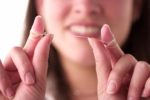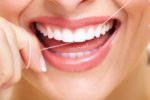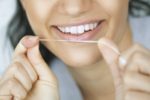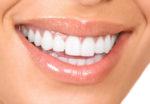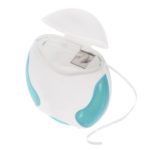Table of Contents
When it comes to oral hygiene, most people first think about brushing. And most people do brush their teeth regularly. That has become second nature to most of us, something that we just do, that our parents reminded us to do ever since we were born.
 Flossing? Well, let’s face it, not so much. We all know how good it is supposed to be for your teeth and gums, but it is just too boring, takes too much time and is not exactly easy to do. It requires both hands, patience and certainly more focus than brushing. And you can’t exactly do it on autopilot.
Flossing? Well, let’s face it, not so much. We all know how good it is supposed to be for your teeth and gums, but it is just too boring, takes too much time and is not exactly easy to do. It requires both hands, patience and certainly more focus than brushing. And you can’t exactly do it on autopilot.
Smart people know all this. And they hate flossing too. This is the reason why they invented Waterpik – a better way to floss. No need to put your hands in your mouth. No need to use floss that tangles into your teeth every now and then, use a jet of water instead. And even the efficacy has improved.
But, when are you supposed to use that Waterpik, before or after brushing? This is a dilemma, not exactly “the chicken or the egg”, but it has separated opinions ever since flossing became as important as brushing.
In this article we will try to explain our point of view, keeping it simple, and providing you our opinions about this interesting question. But also, we will give our answers to other common questions regarding daily oral hygiene routine. We will start the article old-school, with brushing.
 How Many Times Are You Supposed To Brush Your Teeth?
How Many Times Are You Supposed To Brush Your Teeth?
Let’s get this one out of our way first (you probably know the answer) – brush after every meal, or at least twice a day- once after breakfast (or after you wake up, if you don’t eat in the morning), and once before going to bed. Two times per day is enough to keep your teeth and gums healthy. 2x per day, 2-3 minutes for a healthy mouth, not a bad trade.
Brushing is important for one main reason – it mechanically removes the plaque that builds up on your teeth surface. Plaque is a thin film that consists mostly of bacteria. It is the number one reason for tooth decay. If left unremoved, it starts penetrating the tooth enamel, eventually causing cavity. It penetrates the periodontal pockets, causing gum inflammation. Plaque buildup also enhances tartar build up. So removing plaque mechanically with a brush is the most important thing you can do for your dental health.
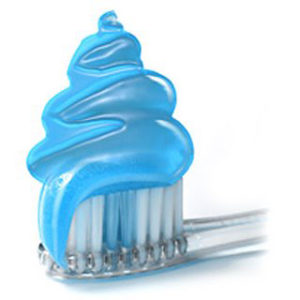 And this was only the toothbrush part of brushing. We haven’t talked about the benefits of toothpaste. The most obvious and the most pleasant one is fresh breath. But there are other benefits too. Most toothpastes contain fluoride, which is known to reinforce tooth enamel, and even reverse early signs of decay. Other toothpastes will whiten your teeth, giving you that bright smile. There are also those which help fighting gingivitis and other gum disease. So, once in the morning, once in the evening, and you are good. But what about flossing?
And this was only the toothbrush part of brushing. We haven’t talked about the benefits of toothpaste. The most obvious and the most pleasant one is fresh breath. But there are other benefits too. Most toothpastes contain fluoride, which is known to reinforce tooth enamel, and even reverse early signs of decay. Other toothpastes will whiten your teeth, giving you that bright smile. There are also those which help fighting gingivitis and other gum disease. So, once in the morning, once in the evening, and you are good. But what about flossing?
How Often Should You Floss?
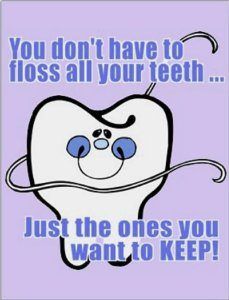
There are different opinions. Some say every time you brush, some say twice a day, some say once a day. We like to keep it simple – floss once every day. If you have the patience, you can do it more often. But flossing is not fun, so just try to do it once until you form a habit, and you can increase that number later, if you find necessary. It will be sufficient to keep your teeth healthy, and you won’t feel overwhelmed by having to complete this boring activity multiple times each day.
When should you do it? In our opinion, if you floss once per day, try doing it in the evening. It is better to clear those food remains that get stuck in between your teeth, than to leave them throughout the whole night. Your breath will smell better in the morning too, keeping your partner happy.
Make sure to add flossing to your routine if you haven’t already. It further improves your oral hygiene. Not even the best toothbrush can reach spots a common floss can with ease. It will keep that plaque away, preventing tartar buildup and gum disease.
Waterpik? Since Waterpik is a water flosser, you should use it with the same frequency as any other string floss – at least once per day, preferably in the evening. You don’t want food remains hanging between your teeth the whole night, piling up nasty bacteria. But why should you consider using a Waterpik over a traditional floss?
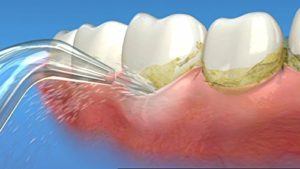
The Benefits Of Using A Waterpik
As we have said many times – flossing is far from being enjoyable. Floss breaks, it sheds, it gets stuck between your teeth (this can be a huge problem, sometimes it requires a trip to the dental office). And it is not for everyone, just ask your friends that wear braces. Also, flossing with a regular floss requires both hands, plus a level of dexterity and patience. Waterpik solves all of these problems.
Waterpik uses a jet of water as its weapon of choice, meaning no strings. Nothing to shed, tangle, break or get stuck between your teeth. No bleeding too. Regular floss is the worst enemy of braces, implants and crowns. But not Waterpik – it is just a jet of water, with different power settings. Nothing can go wrong.
Also, in order to use Waterpik you only need one hand. And plus, it does not require any skill, even the people with medical conditions (e.g. arthritis) can use it safely. And you will spend less time cleaning your teeth with a Waterpik – 3 seconds per tooth and they will sparkle.
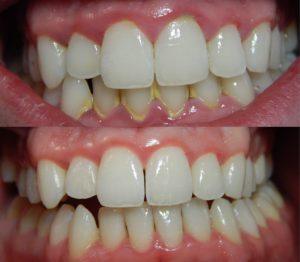
But it is not only about increased comfort – it is about efficacy too. Waterpik is better than a regular floss, in almost every aspect. It is up to 50% more effective fighting gingivitis, and your gums won’t bleed while you use it. Waterpik is going deeper into the pockets than a regular floss- the irrigation will penetrate up to 6 mm. Also, Waterpik is up to 30% more effective fighting plaque, the main cause of tooth decay. After only a 3 second application, this great device is able to remove 99.9% of all plaque in the treated area.
Benefits of a Waterpik, in short:
- Water jet – no shedding, tangling, tearing or breaking
- Braces/Implants/Crowns/Bridges friendly
- Does not require dexterity
- Takes less time to floss
- More efficient against plaque
- Cleans gums deeper and better, preventing gingivitis and bleeding
So a more comfortable and a better working solution, Waterpik beats regular floss on both fronts.
Should You Floss Before You Brush? And What About Mouthwash?

The short answer is yes – first floss, then brush. The number one reason why is to allow your toothpaste to get in between your teeth, and into the pockets better. Flossing removes chunks of food and other debris found in between the teeth, and will even allow the toothbrush to its job better.
There is also an equally important motivation reason – you know the old saying “do the hardest chore first”. Since brushing is something you do on autopilot, you don’t really need to think about it that much, you will probably do it anyway. This is why it is essential to do the flossing first, it is harder, more boring and you are more likely not going to do it if you intend to do it last. And when you see food remainings starting to get removed (and you didn’t even know they were there), you will get even more pumped- you will know that you are actually doing something, since you see results with your own eyes.
Also, if you use mouthwash (and you should), use it at the end of your dental routine. Flossing, and brushing will create debris, and rinsing with a proper mouthwash will remove it. Try getting a fluoride mouthwash – this will strengthen your teeth even further. Your teeth and gums will be clean and your breath fresh as well.
So rember:
- Floss,
- Brush,
- Mouthwash,
- Done!
Related Products
Read about our best Waterpik review here. You can also find more about how to use a Waterpik or how to repair your water flosser.
Conclusion
In this articles we have covered more than the initial question, and we did it on purpose. We tried to provide all the crucial information and explain you why you should brush and floss in the first place. We explained the importance of regular brushing, the use of toothpaste. Also the reasons why you must floss. Also, we have presented you the benefits of Waterpik water flosser – a better solution than a regular floss.
In the end we gave our opinion about the order of things. We think that flossing should be the first step in your dental hygiene routine. Also, we think that you should do it at least once per day, and you should brush your teeth at least twice per day. And if you floss once, do it before bed – your mouth is closed throughout the night, making it an ideal place for bacteria to flourish.
But look, as long as you are brushing and flossing your teeth regularly, you are good, timing and tactics are less important than doing the actual work. But never choose between brushing and flossing! They are equally important, and you simply must find time to do both activities, every day. Your pearly whites will thank you.

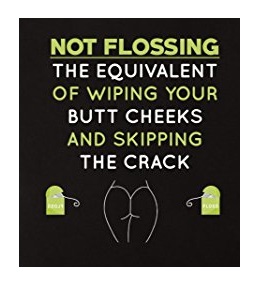 How Many Times Are You Supposed To Brush Your Teeth?
How Many Times Are You Supposed To Brush Your Teeth?


